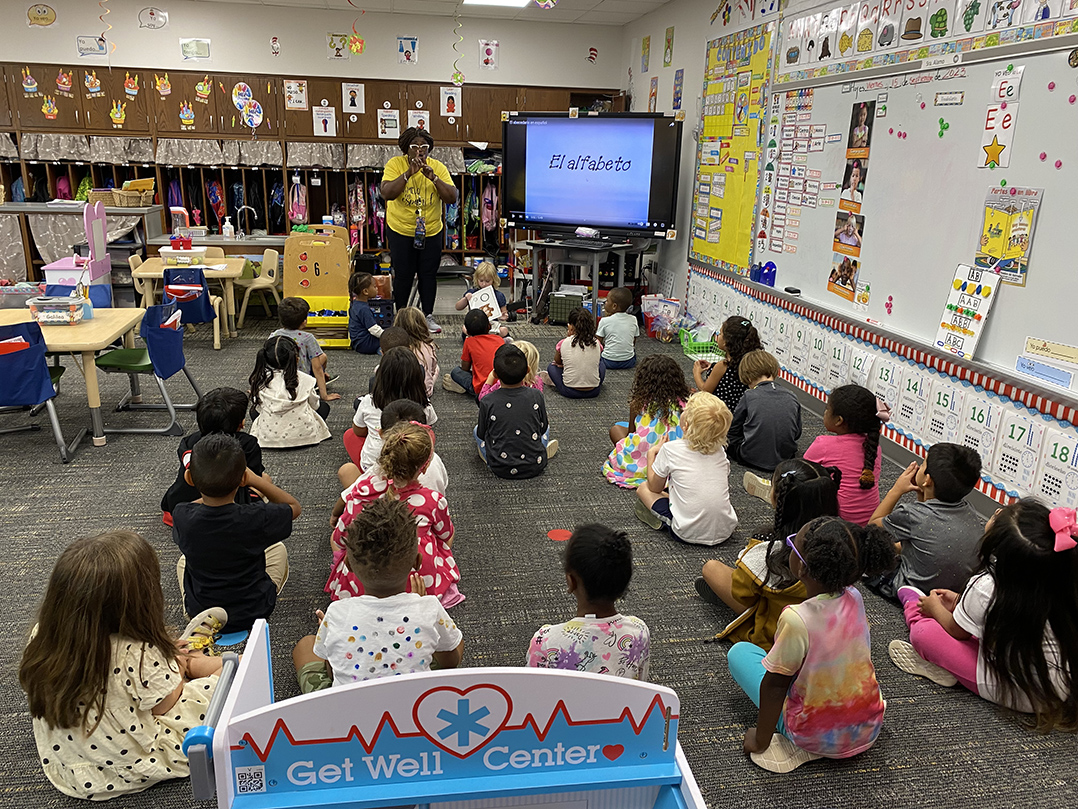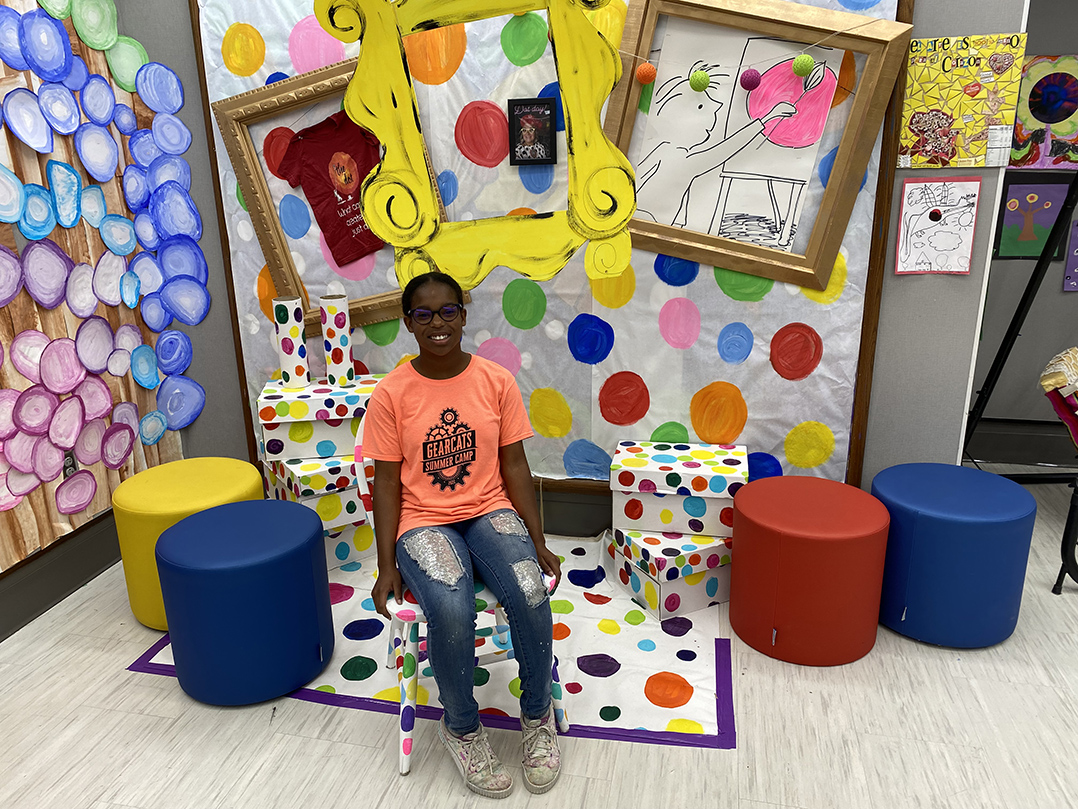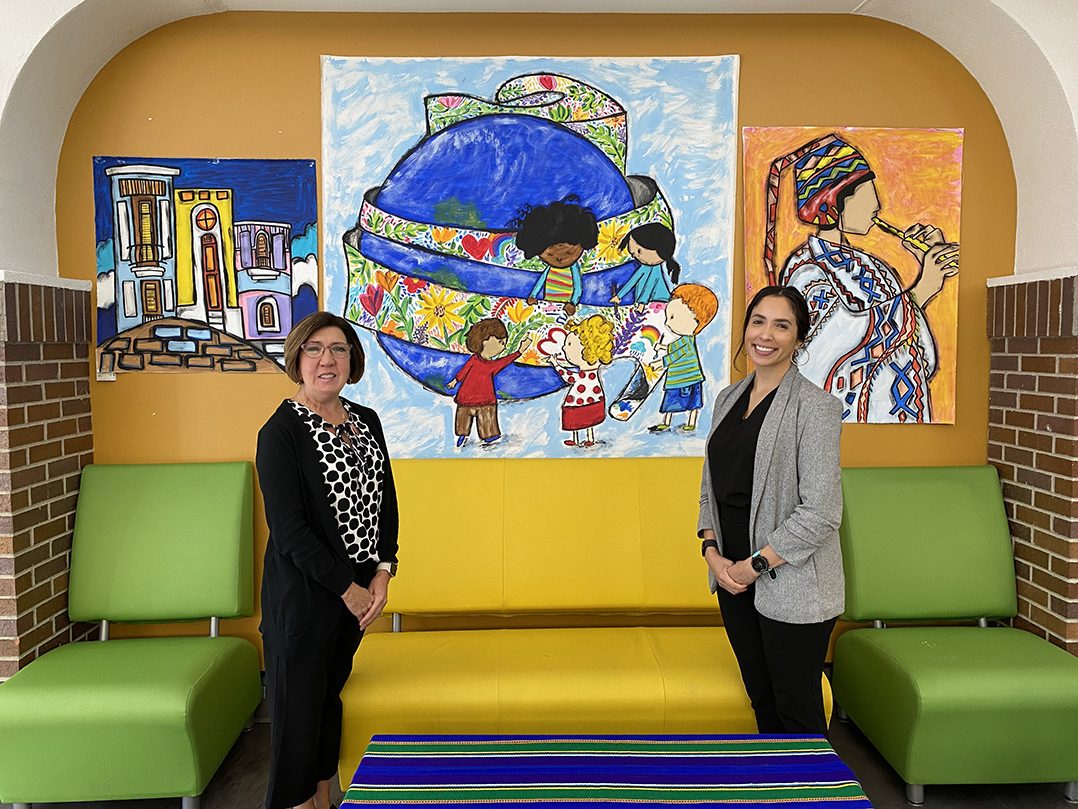As you enter Forest Glen Elementary School, a large banner hangs in the foyer, proudly celebrating the fact that the school is one of two in Metropolitan School District of Lawrence Township recognized for its programming by the Indiana Department of Education.
The magnet school received an award for Excellence in Early Literacy, and school officials — at least in part — credit Forest Glen’s Spanish-language immersion model.
Georgina Mayorga-Schneider is the district’s assistant director of language programs. She said research shows significant benefits when children learn more than one language by third grade. That applies to native English-language speakers and native Spanish-language speakers.
“It is definitely grounded in research that this is the best (for) brain development,” she said. “There are actually pictures of brain scans, and research that show that parts of the brain are much more active for a person that is bilingual.”

The school’s test scores indicate it’s doing something right. Mayorga-Schneider said Forest Glen students scored 90 percent for third-grade literacy last year and performed well in other standardized tests, as well.
Forest Glen’s programming has changed over the years. When it started decades ago, it offered two programs — one a global-based teaching program that was primarily in English and the other a 50-50 Spanish/English program.
“Over time, though, we saw that really to grasp the language, they needed it more than 50 percent of their day,” said Forest Glen Interim Principal Jane Giles. “So, over the years, we have now kind of morphed into the 80-20 model, which is what we currently have. So, 80 percent of the day from pre-K through third grade is taught in Spanish. That’s math, science, humanities STEM. Then there’s about an hour of English, where they’re learning those skills — grammar, vocabulary, bridging the language.”
“Bridging” is when certain words and phrases initially learned in Spanish are taught in English, so students know the right words in both languages.
After third grade, students move to a 50-50 model, where half the day is in Spanish and half in English.
Mayorga-Schneider said the immersion model not only helps all students perform better, it allows children from Spanish-language cultures to maintain ties to their heritage.
“What is really wonderful as our demographics have changed — and we do serve a lot of native Spanish-speaking families or sequential bilingual students — that now not only are we helping them embrace and foster their native language, but also English alongside of that (and) they’re going to outperform their peers, too,” she said.
Forest Glen serves about 950 students, Mayorga-Schneider said, and aims for half native Spanish speakers and half native English speakers in its student population. Every aspect of the school includes bilingual speakers — from teachers to custodians to those greeting visitors at the front desk.
Walking through the school, displays on the walls continue the immersive theme, and the sounds of Spanish and English filter into the hallways.
The immersion program doesn’t end when students leave Forest Glen. Mayorga-Schneider said those in the program continue to take Spanish-language classes in middle-school through high school. By their senior year, they’re eligible to test for a Certificate of Multilingual Proficiency, which can help when applying for colleges.
Spanish-language proficiency can help in future careers, as well. Giles said students who have been through the program have come back with stories.
“We had one (former student) that spoke at an event we had a few years ago that talked about being able to be in the hospital and communicate with a young mother whose baby was sick,” Giles said. “She said, ‘When I walked in as the doctor and was able to communicate with her, her face just lit up (because) someone’s going to hear what’s wrong with my baby.’”
The school’s success has prompted the district to expand its immersion programming beyond Forest Glen’s walls. Mayorga-Schneider said there’s been so much demand that they opened up additional programs serving different demographics in the district, and plan to continue that growth.

Students’ and parents’ perspectives
Forest Glen fourth grader Jackson McAloon has attended the school since kindergarten. He said he’s a native English speaker and loves the school’s program.
“I love learning different languages,” he said. “And I like being with different people of, like, different countries. I live really far away from here. When my parents said, we might move to a different school soon, I kind of like bribed them into keeping me here, because I like it so much.”
McAloon said he wants to use his Spanish skills to help people who can’t speak English fluently, adding that he can ask for help from people who speak Spanish, if he needs it. He said he would like to travel to Puerto Rico, Mexico and Spain someday, and has enjoyed hearing about those places from his teachers.

Alyssa McCauley is a sixth-grader. She also has attended Forest Glen since kindergarten and said she’s now fluent in Spanish.
McCauley said her Spanish-language skills have been useful.
“Sometimes I’ve run into people that only speak Spanish. And then I use my Spanish to communicate with them,” she said. “They’re usually surprised because you just don’t expect just some random person to come up to you and they just know Spanish.”
But, she said, they’re happy to be able to communicate.
McCauley said she has enjoyed learning a language other than English, and the programs that the school offers.
Forest Glen’s school psychologist Maria Ramirez has two children attending the school. She said she is bilingual and wanted the same for her children. Ramirez lives in Greenwood, and said she drives an hour one way every day with her kids, just so they can attend the school.
Ramirez said the program has made a big difference in her kids’ Spanish skills.
“I wasn’t doing a good job at home, just because my husband speaks English,” she said. “So, they were able to communicate (in Spanish), but they didn’t have the content vocabulary. And just coming here made all the difference in they can not only talk about things that happen during the day, but they actually can talk about things related to science, social history (and academics).”



